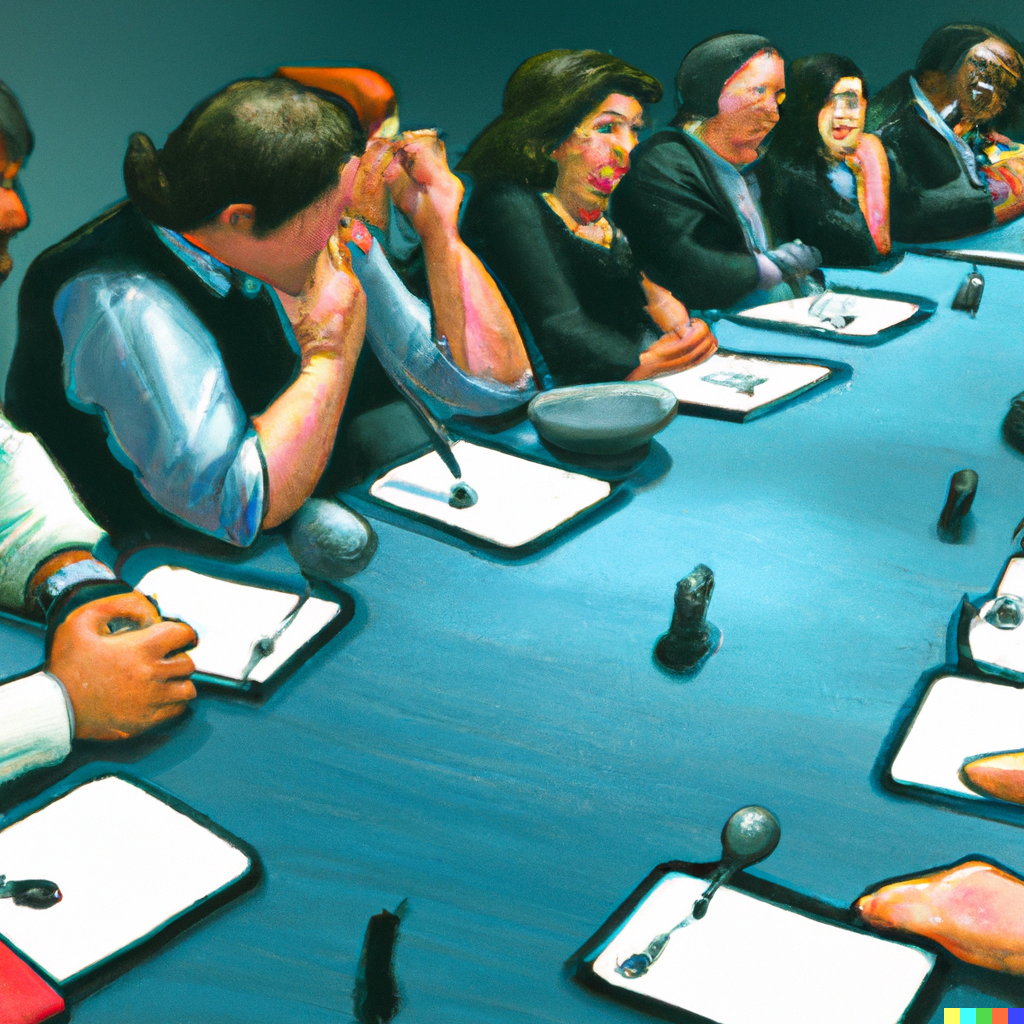The activity of perspective coordination is unreasonably effective at producing fantastic outcomes. In addition to creating legitimacy, it can offer a wider array of choices from which to select. The more diverse and courageous the set of people engaged, the wider array of choices. There’s a processing cost though. So, I’d like to believe that recent advancements in the processing power underlining artificial decision making can assist in helping people coordinate their perspectives faster and more completely. There’s a kind of brutal paradox embedded in all of this. It’ll take a bit of unpacking. Back in 2020, in The Humanity of Productive Meetings, I used an objective-based segmentation to explain the frustration each felt when experiencing ORID facilitation. Briefly: some[…]
Tag: data driven culture
How often are you asked to suspend disbelief as the price of admission? When should you? There are quite a few such contexts. Satire is my favourite. Plays are a close second. When you attend a play, you suspend disbelief for awhile. You know that the actors up on stage are engaging in a deception. They’re acting like something they’re not. And, for the enjoyment of all those around you, you keep your mouth shut about what’s happening up on stage. It isn’t a dialogue. It’s a one way broadcast. The same goes for sports entertainment: a brilliant category positioning statement if there ever was one. You know that the Macho Man Randy Savage isn’t literally the Macho Man Randy[…]
This story begins in a lecture room on an upper floor at Temple University in Philly on a pleasant summer day in 2018. John Hauser is delivering a cracking talk on recommendation engines. He launches into an aside about how the best real estate agents on earth facilitate their consumers’ own discovery of their own preferences. He’s challenging conventional doctrine. The grizzled grizzlies fold their arms and lean back in their chairs. The students from KU lean forward. I catch Luo’s eye and exchange smiles. We’re beaming. I got my popcorn ready. This is gonna be good. He tells a story about how an excellent real estate agent will listen patiently as you state preferences, and then they go onto[…]
“[A]n unrecorded decision may well be, indeed should be, considered as a sure sign that something fundamental has gone wrong with the decision-making process, that one should look for the presence of schemers who can impose projects on those who should know better; that one should also look for powerful external pressures reverberating through the decision-making process — pressures that cannot be resisted and lead to decisions for which there is no real acceptance of responsibility (and are therefore unrecorded). All of this serves to underline a point that is not stressed enough in the political science literature: decision-making is fundamentally a process for assuming responsibility for a proposed action.” Allison, Graham., Zelikow, Philip. (1999) Essence of Decision. 2nd Edition.[…]
Ultimately, how you choose to lead your startup in the post-2022 Tight Money Era depends on what lessons you’re taking away from the 2018-2022 Loose Money Era, and where you’re at on your own leadership journey. In this post, I’ll describe where my stance is at the end of 2022 with respect to a systemized study of new venturing knowledge. How We Got Here: The Loose Money Era Money was cheap between 2018 and 2022 [1]. Stupidly cheap. You know how I know money was cheap? Check the links: Intensely. Stupidly. Insanely. Idiotic. Terribly. Sweatily. Moronicly. Cheap. Cheap money enables radical conservation of thought. (I’m picking on scooters because it’s physically obvious, but there’s plenty of incredibly silly things going[…]
Walter Gretzky is credited with the quote: “Go to where the puck is going, not where it has been.” Walter used socratic questioning to teach his son, Wayne, hockey strategy. Here’s the full context from Wayne’s perspective: Him: “Where do you skate?” Me: “To where the puck is going, not where it’s been.” Him: “Where’s the last place a guy looks before he passes it?” Me: “The guy he’s passing to.” Him: “Which means…” Me: “Get over there and intercept it.” Him: “If you get cut off, what are you gonna do?” Me: “Peel.” Him: “Which way?” Me: “Away from the guy, not towards him.” (Gretzy, Reilly, Gretzky: An Autobiography p. 88) Puck On To win a game of ice[…]
If you need a tool to break down complex scenarios, this approach, a tool using decision forests, might be right for you. By the end of this post, you’ll be able to use the gentler, forward, variant of dancing in a decision forest. This is a post is intended for a curious audience. Decision You’re an extraordinary assembly of chemical gradients. At any given moment you have the opportunity to make millions of decisions. The crudest segmentation, the roughest way I can impose order on all of this complexity is divide them up in two types of decisions: to act, or to not act. Further, when you decide to act, there are two broad types of actions: explore and exploit.[…]
Suppose the following scenario: Series A or B; A data science firm (narrow machine intelligence, applied machine intelligence, general machine intelligence, predictive or prescriptive analytics, software or hardware); Technical CEO / Co-Founder; Chief Marketing Officer (CMO) just hired; What might the CEO-CMO relationship look like? The relationship could be great. If there’s one stereotype about data science CEO’s, it’s that they like incentives to be aligned. The CMO would likely be brought on to focus on growth. If revenue grows, valuation grows, and collective comp would grow. There might be points of friction. From the CMO’s Perspective: Why is the CEO constantly at me about metrics all the time? Why is the CEO always on about non-working dollars? (Why don’t[…]
It seems like a lot of people value certainty. People buy a lot of products and stories for certainty. Insurance. Investment advice. Forecasts. Indulgences.Many entrepreneurs, in particular those in data science, sell certainty. What else is an F1 score other than a measure of certainty on some level? Given some inputs, our machine transforms them some way, which produces some statement about the past, present, or future, with some quantifiable amount of certainty, so that you can do something with confidence (or feel more secure). We sell certainty. And yet isn’t it curious about how much insecurity we’re creating while we do so? It has always been easier to sample data from the past, pull a heuristic from it, and[…]
Data scientists spend so much time focused on learning: both machine learning and human learning. A machine can learn. A data scientist spends a lot of time just trying to persuade a machine to learn. It just takes a lot of labelled data. What about collections of people? Organizations can learn too. It’s just that the data isn’t all labelled well. Why Organizational Learning is Important I was so impressed with Carl Anderson’s synthesis two years ago, about Data Driven Cultures, that I unpacked it and applied it to startups and strategy. Coming back to it now, in 2018, a lot of what he was saying is purely about learning. Carl Anderson, 2015, described a data driven culture as on that:[…]







